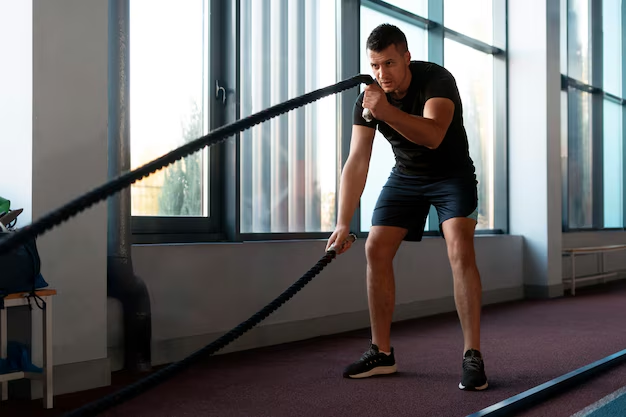
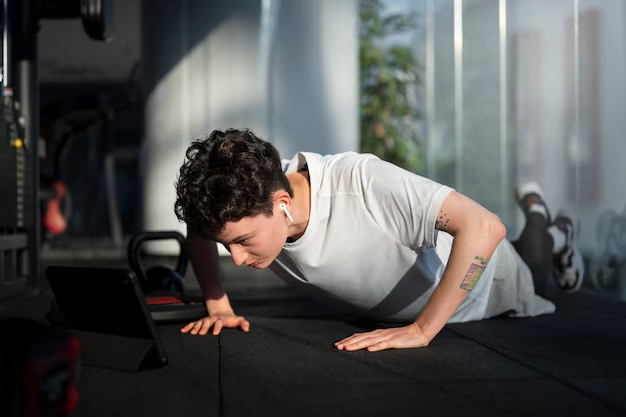
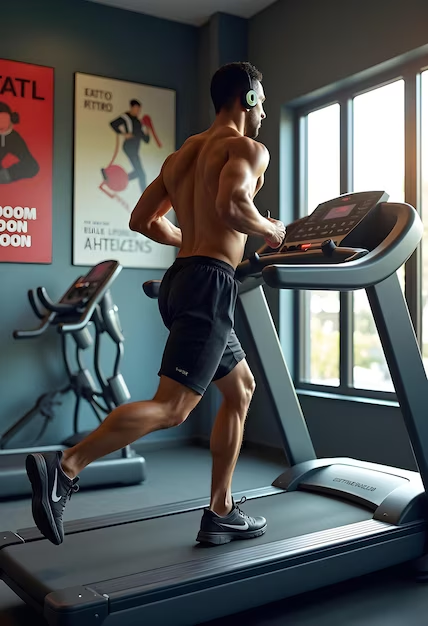

HIIT Workouts to Boost Strength and Burn Fat Fast!
Fitness of High-Intensity Interval Training (HIIT) workouts are a powerful method to boost strength and burn fat quickly, making them a favorite among fitness enthusiasts. By alternating between short bursts of intense exercise and brief recovery periods, HIIT maximizes calorie burn and enhances metabolic rate, even after the workout has ended. These workouts can be tailored to fit any fitness level and often require little to no equipment, making them accessible for home or gym settings. Additionally, HIIT is efficient; even a 20-30 minute session can provide significant benefits, allowing you to fit a robust workout into a busy schedule. Whether you’re looking to shed pounds or build muscle, incorporating HIIT into your routine can lead to impressive results in less time, making it an ideal choice for those seeking a dynamic and effective fitness solution.
Cardio Exercises
1. Treadmill running
Treadmill running is a popular and accessible form of cardiovascular exercise that allows individuals to engage in effective workouts regardless of outdoor conditions. One of the key benefits of treadmill running is its adaptability; users can easily adjust speed and incline settings to match their fitness levels and goals, making it suitable for both beginners and experienced runners. Unlike outdoor running, treadmills offer a cushioned surface, reducing the impact on joints and minimizing the risk of injuries. Additionally, many modern treadmills come equipped with features like heart rate monitors, workout programs, and built-in entertainment options, enhancing the overall experience. Treadmill running also provides the convenience of tracking progress over time, allowing individuals to set and achieve personal fitness goals. Overall, it is an efficient way to improve cardiovascular health, burn calories, and boost overall fitness levels, making it a favorite choice for gym-goers and home exercisers alike.
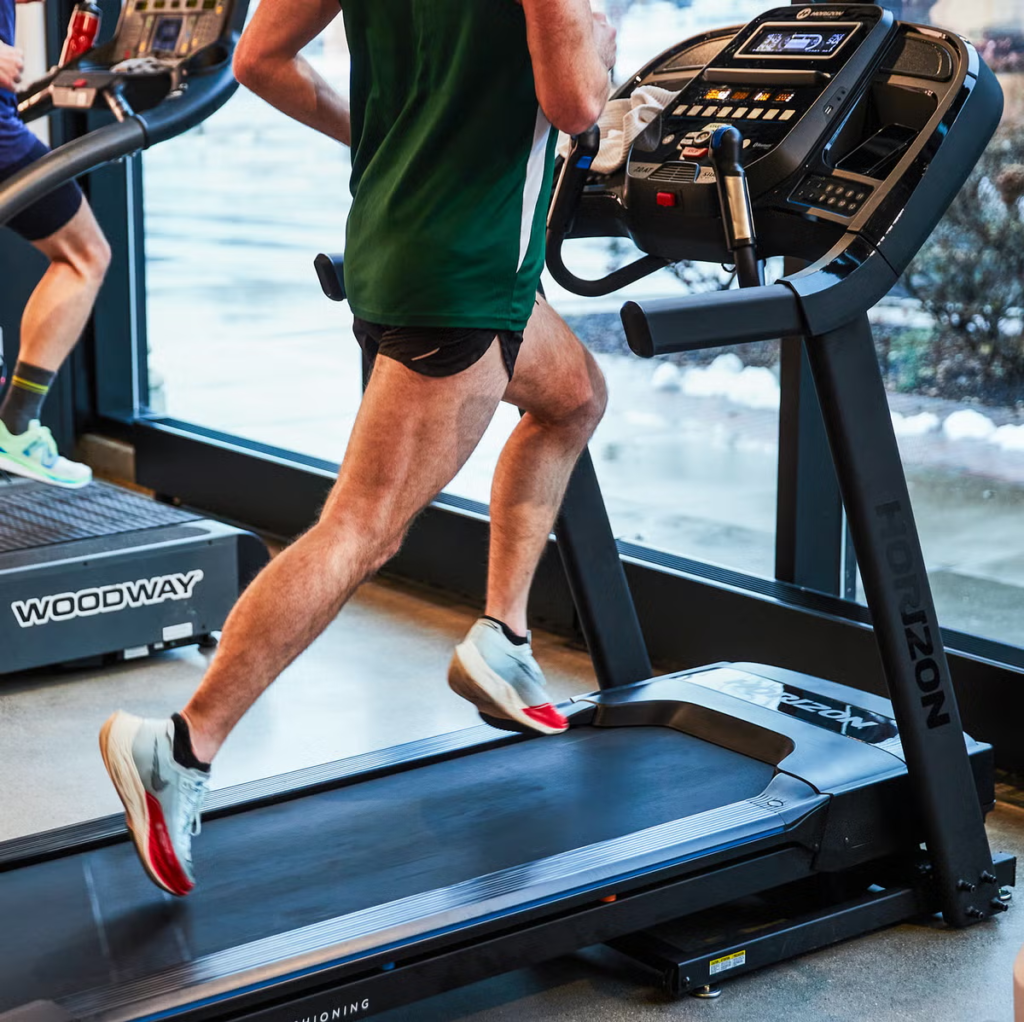
2. Stair climber
The stair climber is an effective cardio machine that simulates the action of climbing stairs, providing a rigorous workout for the lower body. It targets key muscle groups, including the quadriceps, hamstrings, calves, and glutes, promoting strength and endurance. One of its main advantages is the low-impact nature of the exercise, which reduces stress on the joints while still delivering a high-intensity workout. Stair climbers often come with adjustable resistance levels, allowing users to customize their workouts to match their fitness levels. Additionally, they are compact and versatile, making them a popular choice for both home gyms and fitness centers.
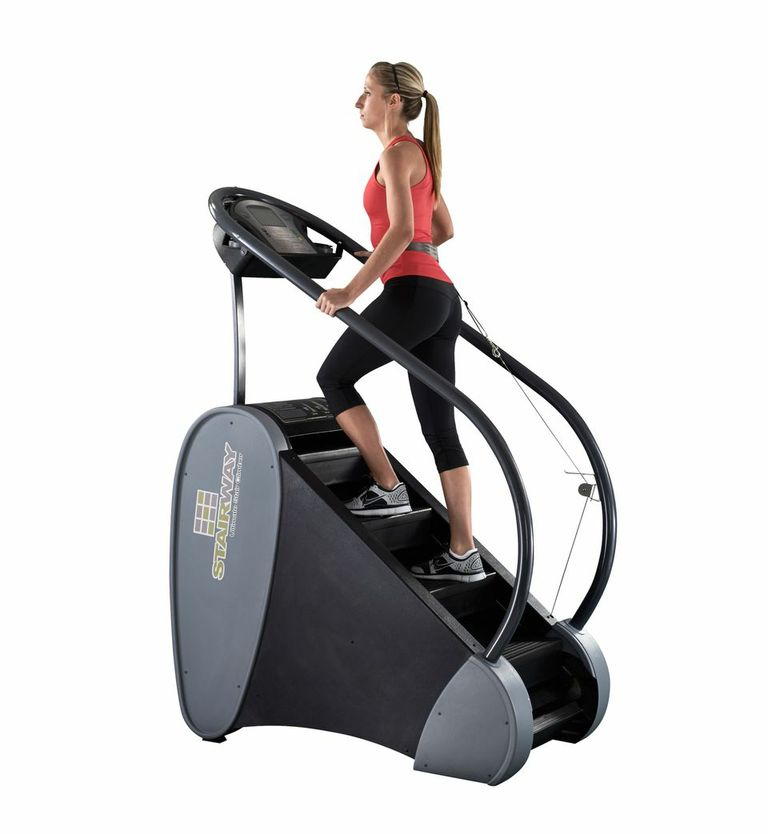
3. Elliptical trainer
The elliptical trainer is a popular cardiovascular machine that mimics the natural motion of walking, jogging, or running without putting excessive strain on the joints. It features foot pedals that move in an elliptical path, allowing for a smooth and low-impact workout. This makes it an excellent choice for individuals seeking to improve their fitness while minimizing the risk of injury. Many elliptical trainers come equipped with adjustable resistance levels and incline settings, providing versatility to tailor workouts. Additionally, they often include handlebars to engage the upper body, promoting a full-body workout while enhancing cardiovascular endurance and burning calories efficiently.

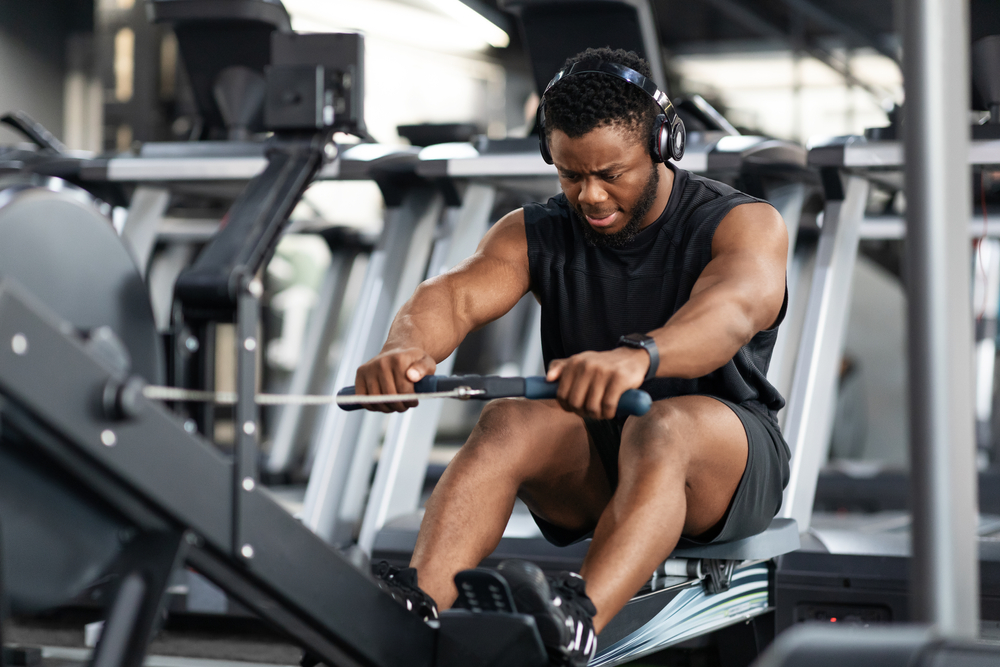
4. Get Fit Fast: The Enduring Benefits of Rowing Machine Workouts
The rowing machine is a highly effective piece of fitness equipment that offers a comprehensive full-body workout, engaging major muscle groups including the legs, core, back, and arms. Its low-impact design makes it suitable for individuals of all fitness levels, reducing the risk of joint injuries while providing an intense cardiovascular workout. Users can easily adjust resistance levels to tailor their workouts, making it perfect for both beginners and advanced athletes. Rowing machines also improve endurance, strength, and coordination, and many models come equipped with performance monitors to track progress. Overall, the rowing machine is an excellent choice for achieving fitness goals efficiently.
5. Jump rope
Jumping rope is a versatile and highly effective form of cardiovascular exercise that can be performed almost anywhere, making it an accessible choice for fitness enthusiasts of all levels. This simple yet powerful workout engages multiple muscle groups, including the calves, thighs, core, and shoulders, promoting overall strength and coordination. It can significantly improve cardiovascular health, enhance agility, and boost endurance, making it an excellent addition to any fitness routine. One of the key benefits of jump rope is its ability to burn calories quickly—often exceeding 10 calories per minute—allowing users to achieve their weight loss goals efficiently.
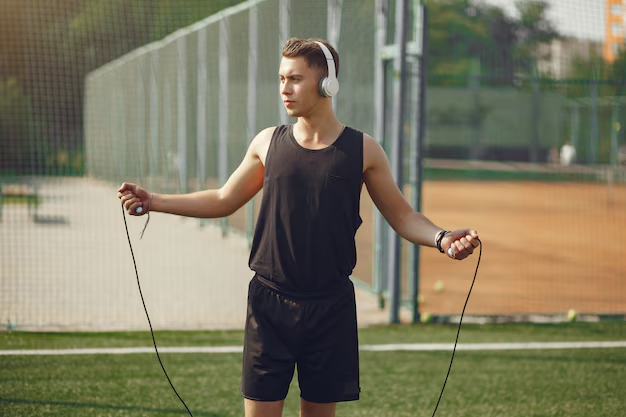
6. Stationary cycling
Stationary cycling is a popular and effective cardiovascular workout that provides numerous health benefits. This exercise can be performed on a traditional upright bike or a recumbent bike, catering to different preferences and fitness levels. Stationary cycling primarily targets the lower body muscles, including the quadriceps, hamstrings, and calves, while also engaging the core for stability. One of the key advantages of stationary cycling is its adaptability; users can easily adjust resistance levels to customize their workouts, making it suitable for both beginners and seasoned athletes. Many stationary bikes also come equipped with heart rate monitors, preset workout programs, and Bluetooth connectivity, enhancing the overall experience.

7. Spinning class
Spinning classes are dynamic group fitness sessions that focus on stationary cycling, offering an exhilarating way to enhance cardiovascular health and build strength. Led by an instructor, these classes typically involve a carefully choreographed workout set to energizing music, which motivates participants to push their limits. The spinning bike allows for adjustable resistance, enabling riders to simulate various terrains, such as flat roads or steep hills, effectively targeting different muscle groups, including the legs, glutes, and core. One of the main benefits of spinning classes is their ability to accommodate all fitness levels, as participants can modify intensity according to their individual capabilities.

8. Sprint intervals
Sprint intervals are a highly effective training method that alternates short bursts of intense sprinting with periods of active recovery or lower-intensity exercise. This approach not only enhances cardiovascular fitness but also improves speed, power, and overall athletic performance. Typically lasting from 20 seconds to a few minutes, the sprints challenge the body, while the recovery phases allow for brief recuperation. Sprint intervals can be performed on various surfaces, including a track, treadmill, or even outdoors, making them versatile and accessible. This training style is also efficient, often yielding significant fitness benefits in a shorter amount of time compared to traditional steady-state cardio.

9. HIIT cardio (High-Intensity Interval Training)
High-Intensity Interval Training (HIIT) cardio is a popular workout method that alternates between short bursts of intense exercise and brief recovery periods. This training style maximizes calorie burn and improves cardiovascular fitness in a shorter time compared to traditional steady-state cardio. HIIT can be tailored to various exercises, including running, cycling, and bodyweight movements, making it versatile and adaptable to different fitness levels. The intense nature of HIIT also boosts metabolism, leading to continued calorie burn even after the workout ends. Overall, HIIT cardio is an efficient and effective way to enhance endurance, strength, and overall fitness.

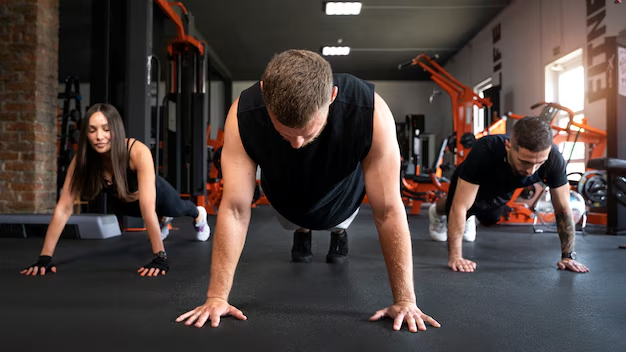
10. Unleash Your Potential: Circuit Training for Maximum Results!
Circuit training is a highly effective workout method that combines strength training and cardiovascular exercises, making it ideal for maximizing efficiency in a limited time. In a typical circuit, participants move through a series of exercises targeting different muscle groups with minimal rest in between, which keeps the heart rate elevated. This approach not only builds strength and endurance but also boosts metabolism, promoting fat loss. Circuit training can be easily customized to fit individual fitness levels and preferences, incorporating bodyweight movements, weights, or cardio equipment. Its versatility and dynamic nature make it a popular choice for those seeking a comprehensive and engaging workout.
11. Tabata training
Tabata training is a high-intensity interval workout that follows a specific format of 20 seconds of maximum effort followed by 10 seconds of rest, repeated for eight rounds, totaling four minutes per exercise. This method, developed by Japanese researcher Dr. Izumi Tabata, is designed to improve both aerobic and anaerobic fitness effectively. The intense bursts of activity push participants to their limits, making it an efficient way to burn calories and build endurance in a short amount of time. Tabata training can be applied to various exercises, including cycling, bodyweight movements, and strength training, allowing for versatility and adaptability to different fitness levels.
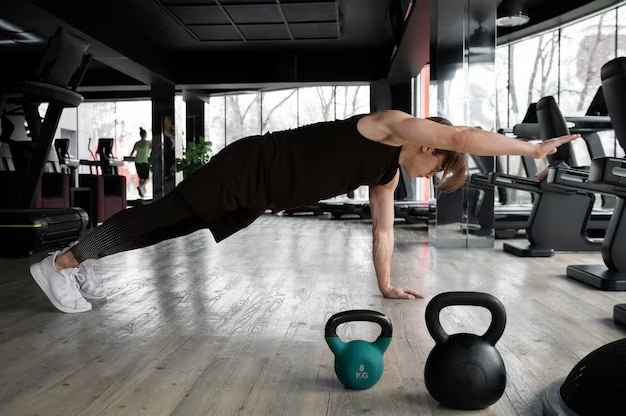
12. Kickboxing cardio
Kickboxing cardio is an exhilarating workout that combines martial arts techniques with high-energy cardiovascular exercise. This dynamic training method not only enhances physical fitness but also improves coordination, balance, and agility. Participants engage in a series of punches, kicks, and footwork drills, providing a full-body workout that effectively burns calories and strengthens muscles. Kickboxing cardio sessions often incorporate interval training, alternating between intense bursts of activity and brief recovery periods, which boosts cardiovascular endurance.

13. Dance aerobics
Dance aerobics is a fun and energizing workout that combines rhythmic dance movements with traditional aerobic exercises, making it both enjoyable and effective for boosting cardiovascular fitness. By incorporating various dance styles, such as hip-hop, salsa, or jazz, participants can improve coordination, balance, and flexibility while burning calories. This high-energy workout targets multiple muscle groups, offering a full-body exercise that strengthens the core, legs, and arms.

14. Step aerobics
Step aerobics is a popular and effective form of cardiovascular exercise that involves stepping up and down on an elevated platform, known as a step. This dynamic workout combines rhythmic movements with choreographed routines, making it both engaging and challenging. Step aerobics primarily targets the lower body, strengthening muscles in the legs, glutes, and core while also promoting cardiovascular endurance.

15. Mountain climbers
Mountain climbers are a dynamic and effective bodyweight exercise that engages multiple muscle groups while providing a high-intensity cardiovascular workout. Performed in a plank position, participants rapidly drive their knees toward their chest in an alternating fashion, simulating the motion of climbing a mountain. This full-body movement targets the core, arms, shoulders, and legs, making it an excellent choice for building strength and endurance. Mountain climbers can be easily modified in speed and intensity, allowing them to fit into various fitness routines, including HIIT workouts and circuit training. Additionally, they promote agility and coordination while significantly boosting heart rate, making them an efficient calorie-burning exercise.

16. Battle ropes
Battle ropes are a versatile and powerful fitness tool that offers a challenging full-body workout. This exercise involves gripping thick, heavy ropes and performing various waves, slams, and whips, which effectively engage the arms, shoulders, core, and legs. Battle ropes are particularly beneficial for building strength and endurance while also improving cardiovascular fitness. The dynamic nature of the workout allows for high-intensity interval training (HIIT) sessions, promoting calorie burn and fat loss. Additionally, battle ropes can be easily adapted to suit different fitness levels and can be incorporated into circuit training, making them a popular choice for gym-goers seeking variety in their routines.

17. Box jumps
Box jumps are a highly effective plyometric exercise that focuses on explosive power and leg strength. In this workout, participants jump onto a sturdy, elevated platform or box, using their legs to propel themselves upward while landing softly on the box. This movement primarily targets the quadriceps, hamstrings, glutes, and calves, while also engaging the core for stability. Box jumps are not only excellent for building muscle and enhancing athletic performance but also improve coordination and balance. They can be easily modified in height to accommodate different fitness levels, making box jumps a versatile addition to any workout routine aimed at increasing overall strength and agility.
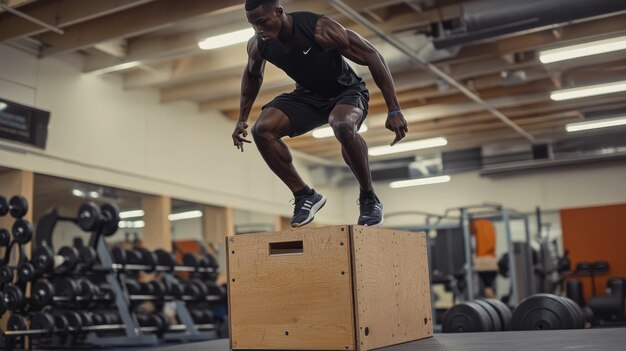

18. From Beginner to Pro: Master the Burpee for Incredible Fitness Gains!
The burpee is a challenging yet highly effective exercise that can elevate your fitness journey from beginner to pro. This full-body movement combines a squat, push-up, and jump, making it a powerful tool for building strength, endurance, and agility. Starting with modified versions, such as eliminating the push-up or stepping back instead of jumping, allows beginners to develop confidence and form. As you progress, incorporating the full burpee enhances cardiovascular fitness and burns calories efficiently. Regular practice not only improves physical fitness but also boosts mental resilience, making burpees an essential component of any workout routine for incredible fitness gains.
19. Jumping jacks
Jumping jacks are a classic cardiovascular exercise that provides an excellent full-body workout. This simple yet effective movement involves jumping to a position with legs spread wide while simultaneously raising arms overhead, followed by returning to the starting position. Jumping jacks effectively elevate heart rate, improve endurance, and enhance coordination. They can be easily incorporated into warm-ups, circuit training, or high-intensity interval workouts, making them versatile for all fitness levels. Additionally, jumping jacks require no equipment, allowing for easy execution at home or in the gym. This dynamic exercise is a great way to boost metabolism and promote overall fitness.

20. Swimming
Swimming is a highly effective full-body workout that combines cardiovascular fitness with strength training, making it an ideal exercise for individuals of all ages and fitness levels. This low-impact activity engages multiple muscle groups, including the arms, legs, core, and back, promoting muscle tone and endurance. Swimming enhances cardiovascular health, improves flexibility, and aids in weight management while being gentle on the joints. Additionally, it offers a refreshing way to stay active, especially in warmer climates. The rhythmic nature of swimming can also have a calming effect, reducing stress and promoting mental well-being, making it a holistic fitness option.
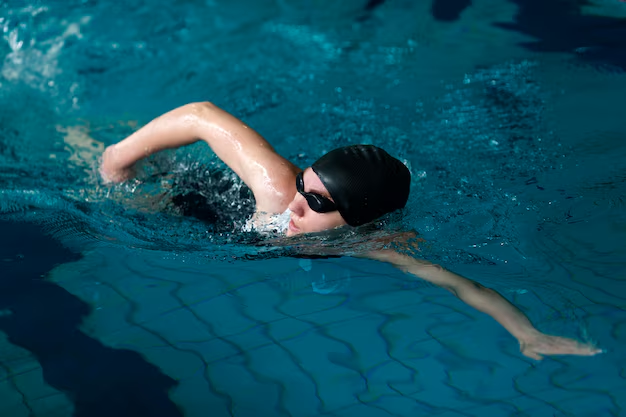
Upper Body Exercises
1. Bench Press
The bench press is a fundamental strength training exercise that primarily targets the chest, shoulders, and triceps, making it a staple in many fitness routines. Performed on a flat bench with a barbell or dumbbells, the movement involves lowering the weight to the chest and pressing it back up to arm’s length. This exercise not only builds upper body strength but also enhances overall muscle mass and power. Proper form is essential to prevent injury and maximize effectiveness, making it important for beginners to start with lighter weights. Incorporating the bench press into workouts can lead to impressive gains in strength and physique.


2. Incline Bench Press
The incline bench press is a powerful variation of the traditional bench press, designed to target the upper portion of the chest while also engaging the shoulders and triceps. Performed on a bench set at a 30-45 degree angle, this exercise emphasizes the clavicular head of the pectoral muscles, helping to develop a more defined and balanced chest. The incline position shifts the focus from the mid-chest, offering a well-rounded upper body workout. Maintaining proper form, including controlled movements and appropriate weight selection, is crucial for maximizing results and avoiding injury. Incorporating incline bench presses into a routine enhances upper body strength and symmetry.
3. Chest Fly
The chest fly is a popular isolation exercise that primarily targets the pectoral muscles, specifically the pectoralis major. Unlike pressing movements, the chest fly stretches and contracts the chest in a unique way, promoting muscle growth and definition. To perform the exercise, one typically lies on a flat, incline, or decline bench, holding a pair of dumbbells above the chest with arms slightly bent. From this starting position, the arms are slowly lowered out to the sides in a wide arc, stretching the chest, before bringing the dumbbells back together at the top in a controlled motion.Chest flies are excellent for increasing chest width and helping build a more well-rounded chest. They can be performed with dumbbells, cables, or resistance bands, offering versatility in any workout routine.
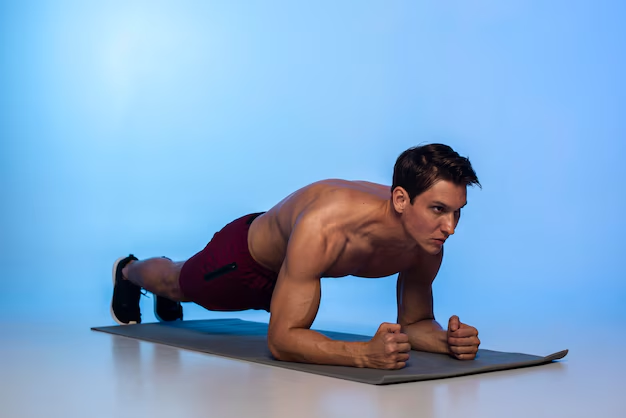
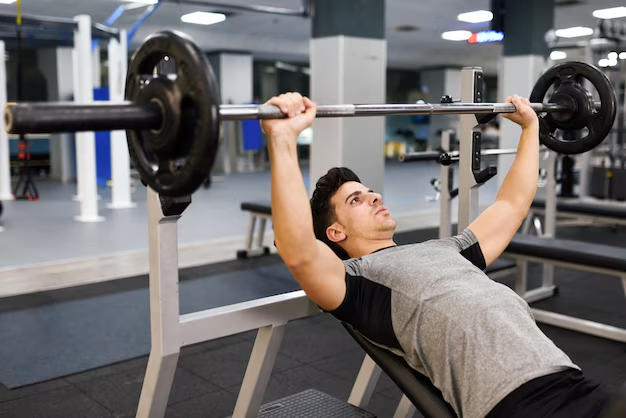
4. Decline Bench Press
The decline bench press is a strength training exercise targeting the lower portion of the pectoral muscles. Performed on a bench set at a downward angle, it differs from the flat or incline bench press by emphasizing the lower chest due to the decline position. This variation engages the pectoralis major more intensely while also involving the triceps and shoulders. To perform the exercise, one lies back on the decline bench, grips the barbell or dumbbells at shoulder width, and lowers the weight toward the chest, then pushes it back up to the starting position. This movement helps build muscle mass and strength in the lower chest area, enhancing overall chest definition. The decline bench press can be an effective addition to a well-rounded chest workout, especially for those aiming to improve their muscle symmetry and address strength imbalances between upper and lower chest muscles.
5. Push-Ups
The push-up is a classic bodyweight exercise that targets multiple muscle groups, primarily the chest, shoulders, triceps, and core. It’s highly effective for building upper body strength and improving muscular endurance without equipment. To perform a push-up, start in a high plank position with hands placed slightly wider than shoulder-width apart and legs extended behind you. Keeping the body straight from head to heels, lower yourself by bending your elbows until your chest nearly touches the ground, then push back up to the starting position. Push-ups engage the pectoral muscles, triceps, deltoids, and core stabilizers, making it a comprehensive upper-body workout.
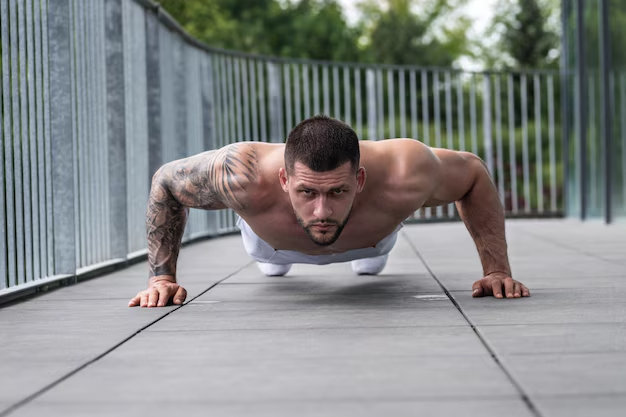
6. Dumbbell Bench Press
The dumbbell bench press is a powerful upper body exercise that targets the pectoral muscles, triceps, and shoulders while promoting balanced muscle development. Unlike the barbell bench press, using dumbbells allows for a greater range of motion, which enhances muscle activation and flexibility. To perform this exercise, lie flat on a bench with a dumbbell in each hand, holding them at chest level with palms facing forward. As you press the weights upward, extend your arms fully without locking your elbows, then slowly lower the dumbbells back to the starting position. It’s an excellent addition to any strength training routine for building muscle size and improving overall upper body strength.
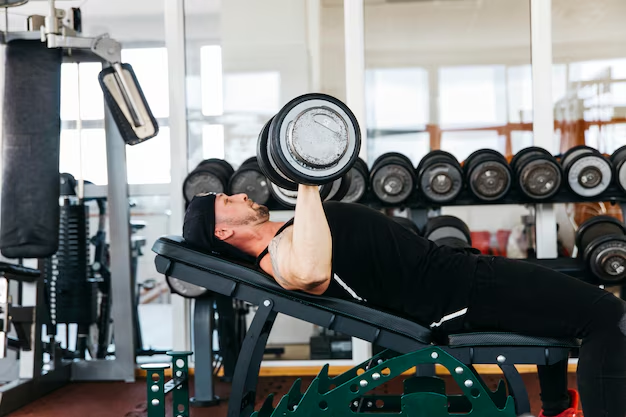
7. Pec Deck Machine
The pec deck machine is an isolation exercise that primarily targets the pectoral muscles, especially the inner chest. It’s designed to simulate the chest fly movement, providing a controlled range of motion for muscle engagement without the need for free weights. To perform the exercise, you sit on the machine with your back pressed against the pad, grip the handles, and bring them together in front of your chest. The pec deck allows for a focused contraction of the chest muscles, promoting muscle definition and growth. It’s an excellent machine for beginners and those looking to fine-tune their chest workout.
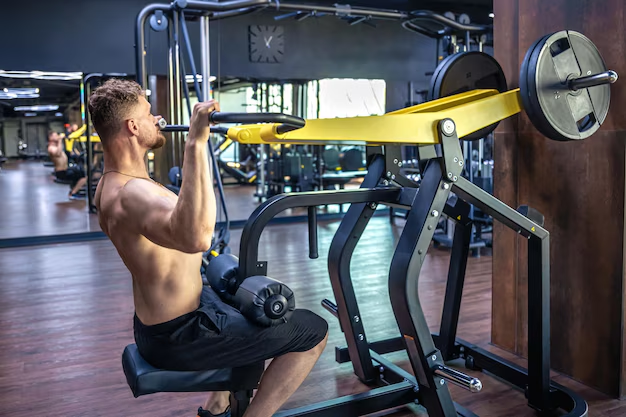
8. Close-Grip Bench Press
The close-grip bench press is a variation of the traditional bench press that emphasizes the triceps while also working the chest and shoulders. By using a narrower grip, typically with hands positioned shoulder-width apart on the barbell, this exercise shifts the focus to the triceps, making it an excellent choice for building upper-arm strength. To perform it, lie flat on a bench and lower the barbell to your chest, keeping your elbows close to your body, then press the bar back up. This movement not only strengthens the triceps but also helps improve overall pressing power and upper-body stability.


9. Chest Dips
Chest dips are a powerful bodyweight exercise that primarily target the lower portion of the pectoral muscles while also engaging the triceps, shoulders, and core. Performed using parallel bars or dip bars, chest dips involve lowering the body by bending the elbows and leaning slightly forward to engage the chest, then pushing back up to the starting position. The forward lean is crucial as it shifts the focus from the triceps to the chest, making it an effective exercise for building chest strength and size. Chest dips are great for adding variety to upper body workouts and offer the flexibility to be done with body weight or added resistance, such as a weighted belt, to increase intensity. In addition to chest development, dips also improve shoulder stability and tricep strength. This compound exercise is an excellent addition to any chest routine, enhancing muscle activation and providing a full range of motion for optimal results.
10. Dumbbell Flys
Dumbbell flys are an effective isolation exercise that targets the pectoral muscles, helping to improve chest width and definition. Performed on a flat, incline, or decline bench, this exercise involves lying back with a dumbbell in each hand, arms extended above the chest with a slight bend at the elbows. Slowly, the arms are lowered out to the sides in a wide arc until the chest is fully stretched, then brought back together in a controlled motion. Dumbbell flys focus on the chest without heavily engaging the triceps, making them ideal for sculpting and toning the chest muscles.
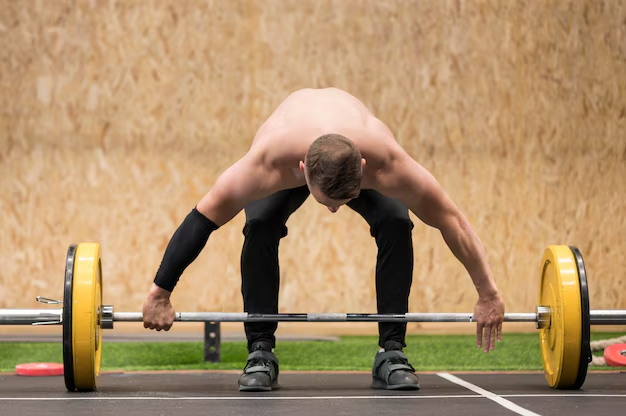
11. Smith Machine Chest Press
The Smith machine chest press is a popular weightlifting exercise that allows for a controlled and stable movement while targeting the pectoral muscles, triceps, and shoulders. This machine features a barbell fixed within steel rails, providing safety and support, making it an excellent choice for both beginners and experienced lifters. To perform the exercise, set the bench in the center of the Smith machine, lie back, and grip the barbell with hands slightly wider than shoulder-width apart. Lower the bar to the chest while keeping elbows at about a 45-degree angle, then press the bar back to the starting position. The Smith machine chest press minimizes the risk of injury by eliminating the need for a spotter and allowing for a smooth range of motion.
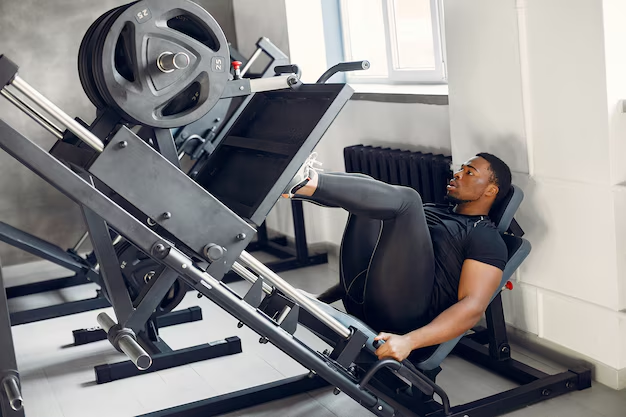
12. Floor Press
The floor press is a valuable strength training exercise that targets the chest, triceps, and shoulders. Performed while lying on the floor, it minimizes shoulder strain compared to traditional bench pressing, making it a safer option for individuals with shoulder issues. To execute the floor press, lie on your back with your knees bent and feet flat on the ground. Hold a pair of dumbbells or a barbell above your chest with arms fully extended. Lower the weights until your elbows touch the floor, then press back up to the starting position. This exercise is effective for building upper body strength and improving pressing power.

13. Resistance Band Chest Press
The resistance band chest press is an effective and versatile exercise that targets the pectoral muscles, triceps, and shoulders. This exercise is ideal for those looking to enhance upper body strength without the need for heavy weights or a gym setting. To perform the resistance band chest press, anchor the band to a sturdy object at chest height or use a door anchor. Stand facing away from the anchor point, gripping the band handles with both hands at chest level. With your feet shoulder-width apart, step forward to create tension in the band. Push the handles forward, extending your arms fully while keeping your elbows slightly bent. Slowly return to the starting position, maintaining control throughout the movement. The resistance band provides constant tension, which helps to build muscle strength and stability.
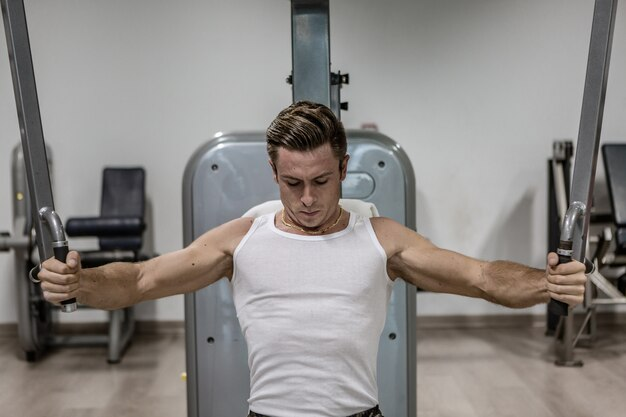

14. Front raises
Front raises are a popular strength training exercise primarily targeting the deltoid muscles in the shoulders, particularly the anterior or front deltoids. This exercise is essential for building shoulder strength and enhancing the overall appearance of the upper body. To perform front raises, begin by standing with your feet shoulder-width apart, holding a dumbbell in each hand at your thighs, palms facing your body. Keeping your arms straight but not locked, raise the dumbbells in front of you to shoulder height while maintaining a controlled motion. Pause briefly at the top of the movement before slowly lowering the weights back to the starting position. It’s important to engage your core throughout the exercise to maintain stability and prevent swinging. Front raises can be incorporated into a comprehensive shoulder workout or upper body routine and can be adjusted in difficulty by varying the weight of the dumbbells. This exercise not only strengthens the shoulders but also improves overall shoulder mobility and stability.
15. Isometric Chest Squeeze
The isometric chest squeeze is an effective exercise designed to target the pectoral muscles and enhance chest strength without requiring any equipment. This exercise can be performed anywhere, making it a convenient addition to any workout routine. To perform the isometric chest squeeze, stand or sit upright with your feet shoulder-width apart. Bring your palms together in front of your chest at heart level, applying pressure against each other as hard as possible. Hold this contraction for a set duration, typically 15 to 30 seconds, while focusing on engaging your chest muscles. The tension created during the squeeze not only activates the pectorals but also helps improve muscular endurance and stability.
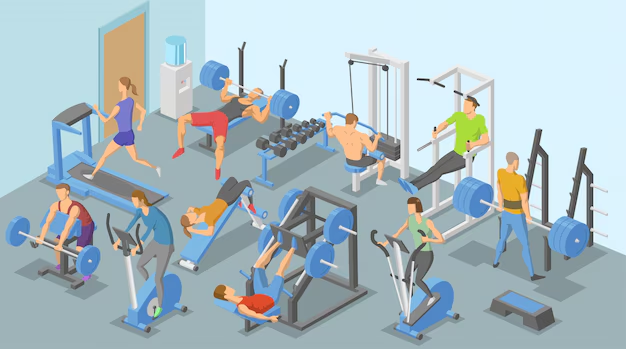
16. Arnold press
The Arnold press is a dynamic shoulder exercise that effectively targets all three heads of the deltoid muscle while also engaging the triceps and upper chest. Named after bodybuilding legend Arnold Schwarzenegger, this movement involves a unique rotational aspect. To perform the Arnold press, start by sitting or standing with a dumbbell in each hand at shoulder height, palms facing your body. As you press the weights overhead, rotate your palms outward, finishing with your arms fully extended above your head. Lower the dumbbells back to the starting position while reversing the rotation. This exercise promotes shoulder stability and strength, making it a valuable addition to any upper body workout.
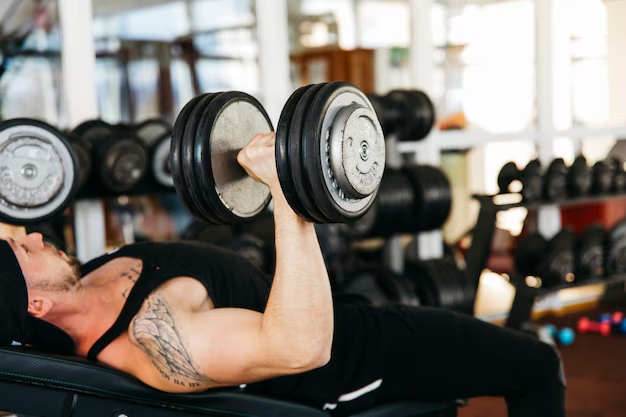
17. Upright rows
Upright rows are a highly effective strength training exercise that targets the shoulder muscles, particularly the deltoids, along with the upper trapezius and rhomboids. This compound movement is great for building shoulder width and improving overall upper body strength. To perform upright rows, stand with your feet shoulder-width apart, holding a barbell or a pair of dumbbells in front of your thighs with an overhand grip. Keeping your elbows higher than your wrists, pull the weights straight up toward your chin, leading with your elbows. Make sure to keep the weights close to your body throughout the movement. Once your elbows reach shoulder level, pause briefly before lowering the weights back to the starting position.

18. Shrugs (dumbbells or barbell)
Shrugs are a straightforward yet highly effective exercise that targets the trapezius muscles, which are crucial for shoulder stability and upper back strength. This exercise can be performed using either dumbbells or a barbell. To execute dumbbell shrugs, stand with a dumbbell in each hand at your sides, keeping your arms straight. Lift your shoulders toward your ears while keeping your arms stationary, then lower them back down. For barbell shrugs, hold the barbell in front of your thighs with an overhand grip, and perform the same shoulder-raising motion. Incorporating shrugs into your workout routine can enhance upper body strength and improve posture.
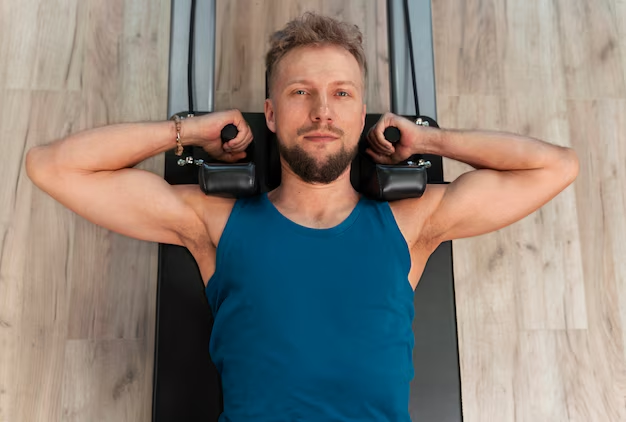
19. Bent-over rows
Bent-over rows are a highly effective strength training exercise that targets the upper back, particularly the latissimus dorsi, rhomboids, and trapezius muscles, while also engaging the biceps. To perform bent-over rows, begin by standing with your feet shoulder-width apart, holding a dumbbell or barbell in each hand. Bend at the hips and knees, keeping your back straight and chest up, until your torso is nearly parallel to the ground. Pull the weights towards your abdomen while keeping your elbows close to your body, then lower them back down. This exercise helps improve posture, upper body strength, and overall muscle definition.


20. Pull-ups
Pull-ups are a fundamental bodyweight exercise that effectively targets the upper body, particularly the latissimus dorsi, biceps, and shoulders. To perform a pull-up, grasp a horizontal bar with an overhand grip, hands slightly wider than shoulder-width apart. Hang from the bar with arms fully extended, then pull your body upward until your chin surpasses the bar. It’s important to engage your core and avoid swinging or using momentum during the movement. Pull-ups not only build upper body strength but also improve grip strength and enhance functional fitness. They can be modified using bands or performed with different grips for varied intensity.
21. Lat pull-down
The lat pull-down is a popular strength training exercise that primarily targets the latissimus dorsi muscles in the back, helping to build width and strength. Performed on a lat pull-down machine, the exercise involves sitting with your knees secured under the padded lever and grasping the bar with a wide grip. Pull the bar down towards your chest while leaning back slightly, engaging your back muscles. It’s essential to keep your shoulders down and avoid using momentum. After reaching the bottom position, slowly return the bar to the starting point. Regularly incorporating lat pull-downs into your workout routine can enhance overall upper body strength and improve posture.

22. Seated cable rows
Seated cable rows are an excellent exercise for strengthening the back, particularly the latissimus dorsi, rhomboids, and trapezius muscles. Performed on a cable machine, this exercise involves sitting on the bench with feet braced against the footplates and gripping the handles attached to the pulley. Begin with your arms extended and your torso upright, then pull the handles towards your midsection, squeezing your shoulder blades together at the peak of the movement. Slowly return to the starting position. Seated cable rows are effective for improving posture, enhancing upper body strength, and promoting muscle balance between the back and chest.

23. Chest-supported rows
Chest-supported rows are a highly effective strength training exercise that targets the upper back, including the latissimus dorsi, rhomboids, and trapezius muscles, while minimizing stress on the lower back. To perform this exercise, lie face down on an incline bench with your chest supported and feet firmly planted on the ground. Grip a dumbbell or barbell in each hand, allowing your arms to hang straight down. Pull the weights towards your chest while squeezing your shoulder blades together, then lower them back to the starting position. Chest-supported rows help improve posture, develop upper back strength, and enhance overall muscle symmetry.

24. Triceps dips
Triceps dips are an effective bodyweight exercise targeting the triceps, shoulders, and chest. Performed using parallel bars or a sturdy bench, they involve lowering and raising the body using the arms. This movement enhances upper body strength, improves muscle definition, and can be easily modified for various fitness levels.

25. Triceps pushdowns
Triceps pushdowns are a popular resistance training exercise that specifically targets the triceps muscles at the back of the upper arm. Performed using a cable machine, the movement involves extending the arms downward while gripping a bar or rope attachment. This exercise not only helps to build strength and size in the triceps but also enhances overall upper body stability. Proper form is essential to maximize effectiveness and minimize the risk of injury; maintaining a straight posture and controlling the movement are crucial. Triceps pushdowns can be easily modified in terms of weight and grip, making them suitable for various fitness levels.

Bodyweight Lower Body Exercises
1. Squats
Squats are a fundamental exercise in strength training that targets multiple muscle groups, particularly the quadriceps, glutes, hamstrings, and core. This compound movement not only builds muscle but also improves overall body stability and balance. Performing squats regularly can enhance athletic performance by boosting leg strength and endurance, benefiting daily activities such as lifting, running, and climbing stairs. Proper form is essential to avoid strain and injury; it’s crucial to keep the chest lifted, core engaged, and knees aligned with the toes. Squats can be modified to suit all fitness levels, from bodyweight squats for beginners to weighted variations for advanced athletes.

2. Lunges
Lunges are an excellent lower-body exercise that strengthens and tones the quadriceps, glutes, hamstrings, and calves while improving balance and coordination. By working each leg independently, lunges help correct muscle imbalances, making them ideal for building symmetrical strength. They also engage the core, promoting better stability and posture. Lunges can be done in various ways—forward, reverse, or walking lunges—each offering unique benefits and challenges. They’re highly adaptable, requiring minimal equipment, so they can be performed anywhere. Incorporating lunges into your workout routine is a great way to boost leg strength, improve endurance, and achieve a well-rounded fitness foundation.

3. Step-Ups
Step-ups are a simple yet powerful exercise that targets the quadriceps, glutes, hamstrings, and calves, making them ideal for building lower-body strength and stability. By mimicking the natural motion of climbing, step-ups improve functional strength for daily activities like walking uphill or climbing stairs. They also engage the core for better balance and can help address leg strength imbalances by working each leg individually. Step-ups are versatile, requiring just a sturdy platform, and can be adjusted for intensity by adding weights. Including step-ups in your workout enhances leg endurance, coordination, and overall lower-body power, contributing to a balanced fitness routine.

4. Glute Bridges
Glute bridges are an effective exercise focused on strengthening and toning the glutes, hamstrings, and lower back while enhancing core stability. By lying on your back with knees bent and lifting the hips, you activate the glutes and hamstrings, making this exercise excellent for building lower-body strength. Glute bridges also help alleviate lower back pain by improving hip flexibility and stability, which can counteract the effects of prolonged sitting. This movement requires no equipment, making it accessible for all fitness levels, and can be progressed by adding weights or single-leg variations. Incorporating glute bridges into your routine enhances posture, balance, and overall hip strength.

5. Bulgarian Split Squats
Bulgarian split squats are a powerful lower-body exercise that targets the quadriceps, glutes, and hamstrings while also engaging the core for stability. By elevating one foot behind you on a bench or step, this movement increases the range of motion, intensifying the workout for each leg individually. Bulgarian split squats help improve balance, correct muscle imbalances, and build unilateral strength, making them especially useful for athletes. They can be modified for different fitness levels by adjusting depth or adding weights. Including Bulgarian split squats in your routine boosts leg strength, enhances coordination, and supports overall functional fitness and athletic performance.


Boost Leg Power with Challenging Pistol Squats Today!
Pistol squats are an advanced bodyweight exercise that challenges leg strength, balance, flexibility, and control. This one-legged squat requires lowering into a deep squat on one leg while keeping the other leg extended in front, targeting the quads, glutes, hamstrings, and core. The movement is highly effective for building unilateral strength, improving coordination, and enhancing ankle mobility, which can support overall athletic performance. Pistol squats demand great control and body awareness, making them ideal for those looking to progress beyond standard squats. With consistent practice and modifications as needed, pistol squats can elevate any lower-body workout routine.
6. Calf Raises
Calf raises are a fundamental exercise that effectively targets the calf muscles, specifically the gastrocnemius and soleus. This movement involves lifting the heels off the ground while standing on the balls of the feet, engaging the lower legs and improving strength and endurance. Calf raises can be performed using body weight, or with added resistance, such as dumbbells or a barbell, to increase intensity. Incorporating calf raises into your workout routine not only enhances muscle tone and definition but also promotes better ankle stability and balance, which are essential for activities like running and jumping. Regularly practicing calf raises can contribute to improved overall leg strength and athletic performance.

7. Wall Sits
Wall sits are an isometric exercise that effectively targets the quadriceps, hamstrings, and glutes while also engaging the core for stability. To perform a wall sit, position your back against a wall and slide down until your thighs are parallel to the ground, holding this position for an extended duration. This simple yet challenging exercise builds muscular endurance and strength in the lower body, making it a great addition to any fitness routine. Wall sits are highly adaptable, requiring no equipment and minimal space, making them perfect for home workouts or gym sessions. Incorporating wall sits can enhance leg strength and improve overall athletic performance.

8. Curtsy Lunges
Curtsy lunges are a dynamic lower-body exercise that targets the quadriceps, glutes, hamstrings, and inner thighs while also improving balance and coordination. To perform a curtsy lunge, step one leg behind the other into a curtsy position, bending both knees to lower the body, then return to the starting position. This movement mimics a curtsy, effectively engaging the stabilizing muscles in the legs and core. Curtsy lunges are versatile and can be modified for varying fitness levels by adding weights or increasing the depth of the lunge. Incorporating curtsy lunges into your workout routine enhances leg strength, flexibility, and overall lower-body aesthetics.

9. Lateral Lunges (Side Lunges)
Lateral lunges, also known as side lunges, are an effective lower-body exercise that targets the inner and outer thighs, glutes, quadriceps, and hamstrings. This movement involves stepping out to the side with one leg while bending that knee and keeping the other leg straight, then pushing back to the starting position. Lateral lunges improve lateral movement, balance, and flexibility, making them particularly beneficial for athletes and anyone looking to enhance functional fitness. They can be easily modified by adjusting the depth of the lunge or adding weights for extra resistance. Incorporating lateral lunges into your workout routine helps build strength and stability in the lower body.

10. Single-Leg Deadlift (Bodyweight)
The single-leg deadlift (bodyweight) is a challenging yet effective exercise that enhances balance, stability, and strength in the lower body. This movement involves standing on one leg while hinging at the hips, lowering the torso toward the ground while extending the other leg straight behind you. Engaging the core and maintaining a straight back is crucial to perform this exercise safely and effectively. The single-leg deadlift primarily targets the hamstrings, glutes, and lower back, promoting better muscle coordination and preventing injuries. As a bodyweight exercise, it can be easily incorporated into any workout routine, making it accessible for all fitness levels.

Machine-Based Lower Body Exercises

Leg Press Variations for Maximum Lower Body Gains!
Leg press variations are an excellent way to target different muscle groups in the lower body and maximize gains. The traditional leg press focuses on the quadriceps, hamstrings, and glutes, but variations like the narrow stance leg press emphasize the inner thighs, while a wider stance targets the outer glutes and hips. Single-leg leg presses enhance balance and unilateral strength, helping to correct muscle imbalances. Incorporating feet positioning changes, such as elevated or high foot placement, can shift the focus between muscle groups. Adding resistance bands or using a weighted vest during leg press workouts can further increase intensity, making your lower body training more effective and versatile.
1. Leg Extension
Leg extensions are an isolation exercise primarily targeting the quadriceps, the muscles located at the front of the thigh. Performed on a leg extension machine, the exercise involves sitting with your back against the pad and extending your legs upward, which engages the quads as you lift the weight. This movement is particularly effective for developing muscle definition and strength in the thighs. Leg extensions can be beneficial for athletes looking to improve performance in activities that require strong legs, such as running or jumping. However, it’s essential to use proper form and avoid excessive weight to reduce the risk of knee strain. Incorporating leg extensions into your workout routine can enhance overall leg strength and aesthetics.

2. Leg Curl
Leg curls are a key isolation exercise designed to strengthen the hamstrings, the muscles located at the back of the thigh. Typically performed on a leg curl machine, this exercise involves lying face down or sitting while curling the legs toward the body against resistance. By focusing on the hamstrings, leg curls help improve muscle balance between the front and back of the legs, which is crucial for overall leg function and injury prevention. This exercise is especially beneficial for athletes, as strong hamstrings enhance performance in activities like running and jumping. Incorporating leg curls into your routine promotes stronger, more defined legs and supports better movement mechanics.

3. Calf Raise Machine
The calf raise machine is a specialized piece of equipment designed to effectively target the calf muscles, specifically the gastrocnemius and soleus. This machine typically features a padded shoulder rest and a footplate, allowing users to perform calf raises with added resistance. By standing on the footplate and pushing through the balls of the feet to lift the heels, individuals can isolate and strengthen their calves. The calf raise machine provides stability and support, making it ideal for both beginners and advanced fitness enthusiasts. Regularly incorporating calf raises on this machine can enhance muscle definition, improve lower leg strength, and contribute to overall athletic performance.

4. Seated Calf Raise Machine
The seated calf raise machine is an effective piece of gym equipment specifically designed to target the soleus muscle of the calves. Unlike standing calf raises, which emphasize the gastrocnemius, the seated position allows for greater isolation of the lower leg muscles. To use the machine, individuals sit on a padded bench with their feet placed on a platform and a weight resting on their thighs. By lifting the heels while keeping the toes grounded, users can effectively strengthen and define their calf muscles. Incorporating the seated calf raise into a workout routine can improve overall leg strength, enhance stability, and contribute to better athletic performance.

5. Hack Squat Machine
The hack squat machine is a powerful piece of gym equipment designed to target the quadriceps, hamstrings, and glutes while providing support and stability during the squat movement. Users position themselves with their backs against a padded support and their feet on a platform, allowing for a controlled squat motion. This machine encourages proper form by keeping the spine aligned and minimizing the risk of injury, making it suitable for both beginners and experienced lifters. By adjusting the weight and foot placement, individuals can customize their workouts to focus on specific muscle groups. Incorporating the hack squat machine into your routine enhances lower body strength, muscle definition, and overall fitness performance.


Why the Glute Bridge Machine Should Be in Your Routine
Incorporating the glute bridge machine into your workout routine is essential for targeting and strengthening the glute muscles effectively. This specialized equipment allows for greater resistance and stability, enabling users to perform glute bridges with proper form and maximum engagement. By isolating the glutes, the machine helps enhance muscle activation, leading to improved strength, tone, and shape. Additionally, strong glutes contribute to better posture, increased athletic performance, and reduced risk of injury by stabilizing the pelvis and spine. Whether you’re a beginner or an advanced athlete, the glute bridge machine is a valuable addition to any fitness regimen, promoting overall lower body strength.
